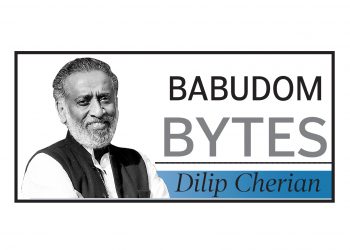The merger of the Jammu & Kashmir cadre into the UT cadre, among other things, is meant to address the old problem of the acute shortage of IAS officers in the Union territory. The erstwhile J&K cadre had a stipulated strength of 137 IAS officers but currently has merely 58, of which nine are on Central deputation. The result is that practically every IAS officer in the UT is handling several portfolios, which is not exactly great news for good governance.
The problem has lingered for several years, with the result that officers of the Kashmir Administrative service have long been handling posts reserved for IAS officers, without being promoted to the IAS. For instance, the post of district magistrate (DM) can only be filled by an IAS officer, but in Kashmir, nine out of 20 district magistrates are from the state administrative service.
Apparently, no state administrative service officer has been inducted into the IAS since 2012, which has only accentuated the problem. While in other parts of the country there is a 37 per cent reserved quota for state service officers, in Kashmir it has become 50 per cent!
The cadre merger, the Centre hopes, will allow officers in the AGMUT cadre to be posted in J&K and Ladakh, and vice versa. Until that happens, it is the state service babus who will continue to hold most of the administrative positions in the Union Territory.
High profile exits
PK Sinha, Senior Advisor to Prime Minister Narendra Modi, quietly put in his papers but cannot stop tongues from wagging. It is being said that the former Cabinet Secretary is being primed for another role by Modi. Among the theories doing the rounds, it is being speculated that Sinha could be the next Lt Governor of either Delhi or Puducherry.
This may not be without precedent. Recall 2019 when Nripendra Misra, the then Principal Secretary to PMO, similarly resigned “for personal reasons” but was soon named chairman of the prestigious Ram temple construction committee.
While Sinha’s immediate future is being debated, Mumbai’s police commissioner Parambir Singh has been replaced. The cop has been in the headlines after the highly publicised arrest of Republic TV owner Arnab Goswami and the ongoing mystery surrounding the “threat” to Reliance owner Mukesh Ambani and his family. The decision was reportedly taken after several meetings between Chief Minister Uddhav Thackeray of the Shiv Sena and Sharad Pawar, chief of the Nationalist Congress Party, which is an ally of the state’s ruling coalition. The Maharashtra government seems to want to divert the heat from these high-profile cases and opted for the less controversial Hemant Nagrale.
A disquieting departure
Economic Affairs Secretary Tarun Bajaj has been given an additional charge of Revenue Secretary after the retirement of ABP Pandey last month. However, Pandey’s exit hasn’t been as quiet as he may have expected. As soon as retired, media reports appeared around the lack of progress in filling more than 400 vacancies of income tax commissioners and others, some of which have been hanging fire since 2019. It was somehow hinted that Pandey did not do enough during his stint as Revenue Secretary to fill these vacancies. Further, sources say, Pandey drew the ire of Odisha-based IT chief commissioner DP Kar, who reportedly wrote to the Prime Minister demanding an enquiry against Pandey.
Yet, others point out that the same Pandey was among the few babus who successfully led three crucial institutions of the Modi sarkar – Department of Revenue, Goods and Services Tax Network and the Unique Identification Authority of India (UIDAI). As Revenue Secretary, Pandey led significant tax reforms undertaken by the government. Clearly, the detractors waited for the man to retire before raising issues that troubled them during his tenure.
Share a babu experience! Follow dilipthecherian@twitter.com. Let’s multiply the effect.
